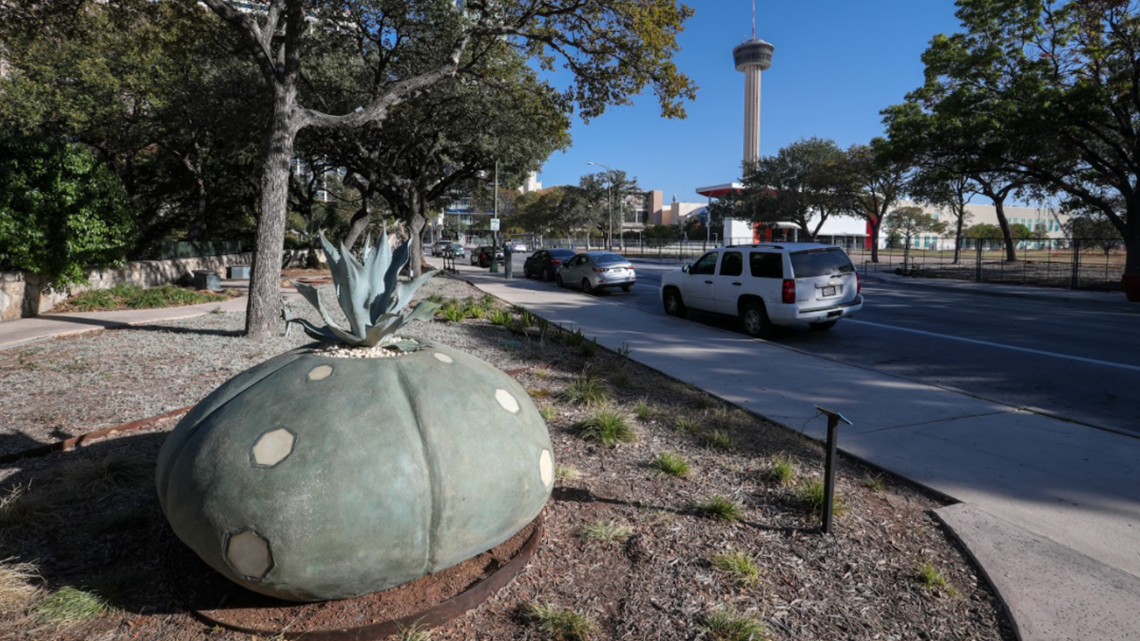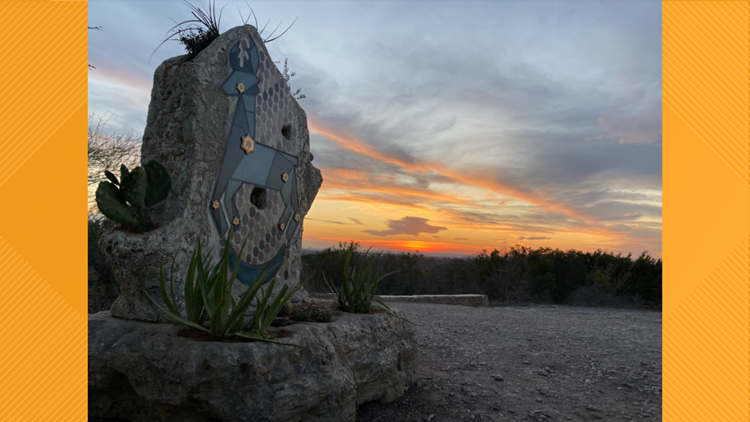SAN ANTONIO — The City of San Antonio’s Department of Arts & Culture and its Public Art Division are honoring Indigenous Heritage with a new public art installation at Comanche Lookout Park.
They unveiled “Najo Jām”, meaning “Our Home” in the Coahuiltecan language Pajalate. The artwork pays tribute to indigenous ancestors of South Texas as well as future generations, according to the press release. It features a half-moon and deer imagery carved in the faux stone. The monument also includes a peyote stich pattern made of tile reminiscent of bead work from various tribes, including South West and Plains tribes
"Sitting at the peak of Comanche Lookout Park, “Najo Jām” is considered pan-Indian, relating to the multiple indigenous tribes including those that call San Antonio home," The City says.
Designed by collaborating San Antonio artists Carlos Cortés and Doroteo Garza, the installation features stylized benches, a planter and a monument that symbolizes peyotism used as part of indigenous religious ceremonies.
Both artists also collaborated on a “Najo Jām” oversized planter in the shape of a peyote bud at the River Walk Public Art Garden near the corner of Market and Alamo Streets. The planter is temporarily on display at the River Walk Public Art Garden:


“The use of trabajo rustico for this project is meaningful and intentional, as both the technique and symbols of indigenous culture represent deep and rich traditions,” said Cortés, a third generation trabajo rustico concrete artisan. “It is inspiring to use the skills passed down to me from my father, who learned from my great uncle, to honor and reflect on the ancestors and heritage of this land.”
The park is home to Comanche Hill, the fourth-highest point in Bexar County with multiple trails that provide views of San Antonio. “Najo Jām” is meant to be a representative of a welcoming space, inviting interaction after a long hike throughout the park.
“It is my hope that when park visitors see the installation, they gain an understanding that indigenous stories and memories existed here long before their hike,” said Garza.
For more information about “Najo Jām” and the Department of Arts & Culture’s Public Art Program, click here.
Related links on KENS 5:



